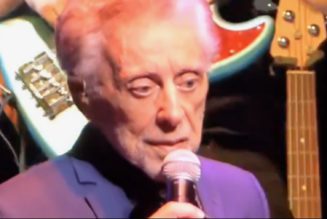A few months ago, we heard that Mazda was readying an inline-six engine for use in upcoming larger vehicles, including large sedans and crossover SUVs that could incorporate hybrid technology. We even found some patent filings that showed the inline-six’s notably compact design. Mounted longitudinally—so, pointed north and south in the car, front to back—this increased the potential for dynamically interesting, rear-drive (or rear-drive-based all-wheel drive) models in the BMW mold. A Mazda investor presentation provides some more details about what those vehicles will look like, and how this new large vehicle platform could spawn a hybrid SUV for America.
The report was first spotted by the Japanese publication Car Watch and can be found here in PDF form. The good stuff is in the part of the slide deck discussing upcoming technology, which will arrive in the next two years. In the image available in the slide deck, both the inline-six engines sport turbocharging, and the flat cylinder head displayed on the right appears to be from the diesel version. The presentation states that the inline-six will be available in all three of Mazda’s combustion types: traditional gasoline internal combustion, diesel, and the innovative Skyactiv-X spark-controlled compression-ignition. Remember, we still don’t have any versions of Skyactiv-X for sale in North America and likely won’t for some time; it’s available in Europe in inline-four format currently in the Mazda 3 and CX-30, however.
The inline-six is, as we already mentioned, destined for larger vehicles. To hit various carbon emissions targets, the slides make it clear that electrification will play a role on at least some, if not all, inline-six applications. We do know that the MX-30 crossover will launch in Japan as a hybrid before heading to Europe as an EV. Mazda says plug-in hybrid and 48-volt mild hybrid variants will be available, although which vehicles will utilize which option is unclear.
Electric vehicles will also be an important part of Mazda’s future plans, as the MX-30 EV attests to. Interestingly, the rotary engine—a favorite of enthusiasts but a format with limited applicability to contemporary fuel economy and emissions standards—seems to still be in play. We’ve been talking for years about how the Wankel engine might endure as a range extender in EVs, as it did in the Demio (Mazda 2) EV in Japan. And in October 2020, Mazda confirmed this, saying the MX-30 EV will utilize one. Thankfully nothing’s changed since then, and Mazda still plans to use the legendary rotary engine to extend the appeal of its EV products.
Mazda will also increase its production presence in the U.S. through a joint venture with Toyota. The new plant—Mazda Toyota Manufacturing USA, in Alabama—will produce a crossover utilizing Toyota’s proprietary hybrid technology. It’s not clear if this will be a rebadged Toyota product, or a Mazda-designed product that utilizes Toyota’s powertrain tech—the latter seems more likely. That said, Mazda already produces cars rebadged as Toyotas, like the Mazda 2–based Yaris iA, so anything’s possible. As a side note, the presentation claims that Mazda will sell a version of the Yaris (which is a different model entirely than the Yaris sold here) with Toyota’s Hybrid System in Europe.
We expect the next Mazda 6, and most of the company’s upcoming crossovers and SUVs but in particular the CX-9, to adopt the longitudinal platform that can accommodate the inline-six—and with it, we hope, styling inspired by the Vision Coupe Concept. Smaller vehicles will continue with transverse inline-fours, some electrified. But only time will tell which versions we’ll get, and what engine variants will come to North America.
The post Mazda Details Ambitious New Inline-Six Engine, Hybrid SUV Plans appeared first on MotorTrend.










